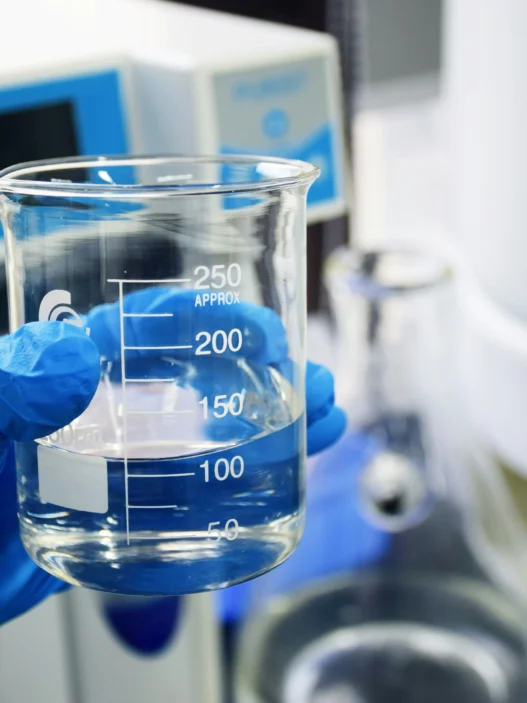2,4′-Dibromoacetophenone, a chemical compound, may not be directly relevant to everyday life for most individuals. However, it plays a significant role in various industries such as pharmaceuticals, agrochemicals, and materials science. This compound is commonly used as an intermediate in the synthesis of various organic molecules with potential applications in drug design, crop protection, and materials development. Its versatility and reactivity make it a valuable building block for the creation of novel compounds that can impact our daily lives in numerous ways.
Table of Contents:
- 💡 Commercial Applications
- ⚗️ Chemical & Physical Properties
- 🏭 Production & Procurement
- ⚠️ Safety Considerations
- 🔬 Potential Research Directions
- 🧪 Related Compounds
💡 Commercial Applications
2,4′-Dibromoacetophenone, a chemical compound derived from acetophenone, finds its primary commercial and industrial applications in the synthesis of various pharmaceuticals and agrochemicals. Its ability to undergo further reactions, such as halogenation and nucleophilic substitution, makes it indispensable in the production of organic compounds used in the agricultural and pharmaceutical industries.
In the realm of drug and medication applications, 2,4′-Dibromoacetophenone plays a crucial role as an intermediate compound in the synthesis of various pharmaceutical drugs. Its unique chemical structure allows it to serve as a building block for the creation of specific drug molecules that exhibit desired biological activities. Pharmaceutical researchers utilize this compound as a key starting material in the production of drugs aimed at treating a wide array of medical conditions.
⚗️ Chemical & Physical Properties
2,4′-Dibromoacetophenone is a white crystalline solid with a faint sweet odor. It is sparingly soluble in water but readily soluble in organic solvents due to its aromatic nature.
The molar mass of 2,4′-Dibromoacetophenone is 279.95 g/mol and its density is approximately 2.03 g/cm³. In comparison, common food items such as sugar and salt have lower molar masses and densities, making 2,4′-Dibromoacetophenone relatively heavier.
The melting point of 2,4′-Dibromoacetophenone is around 136-138°C, while its boiling point is approximately 320°C. These values are significantly higher than those of common food items, indicating the compound’s high stability and resistance to temperature changes.
🏭 Production & Procurement
2,4′-Dibromoacetophenone is typically produced through the bromination reaction of acetophenone with bromine in the presence of a suitable catalyst. This reaction results in the substitution of two hydrogen atoms on the benzene ring with bromine atoms, yielding the desired product.
In order to procure 2,4′-Dibromoacetophenone, one must source the necessary starting materials such as acetophenone and bromine, as well as the catalyst for the bromination reaction. These materials can be obtained from chemical suppliers or manufacturers specialized in providing reagents for organic synthesis.
Once the required materials are acquired, they can be transported to a laboratory or manufacturing facility where the synthesis of 2,4′-Dibromoacetophenone can take place. Proper safety precautions must be observed during transportation to prevent exposure to hazardous chemicals and ensure the integrity of the materials.
⚠️ Safety Considerations
Safety considerations for 2,4′-Dibromoacetophenone include potential health hazards and risks of physical harm. This compound is classified as harmful if swallowed, inhaled, or in contact with skin and eyes. Therefore, proper personal protective equipment such as gloves, goggles, and respiratory protection should be worn when handling this substance. Additionally, it is important to work with 2,4′-Dibromoacetophenone in a well-ventilated area to minimize the risk of exposure.
Hazard statements for 2,4′-Dibromoacetophenone include “Causes skin and eye irritation” and “May cause respiratory irritation.” These statements indicate the potential risks associated with exposure to this compound and emphasize the importance of taking proper precautions when handling it. It is crucial to follow safety protocols and guidelines to prevent any adverse effects on health.
Precautionary statements for 2,4′-Dibromoacetophenone include “Wear protective gloves/eye protection/face protection” and “Avoid breathing dust/fume/gas/mist/vapors/spray.” These statements highlight the necessary precautions that should be taken to ensure safe handling of this compound. It is essential to adhere to these precautionary measures to minimize the risk of harm and protect oneself from potential hazards when working with 2,4′-Dibromoacetophenone.
🔬 Potential Research Directions
One potential research direction for 2,4′-Dibromoacetophenone involves exploring its potential as a building block in organic synthesis. By investigating the reactivity of this compound with various nucleophiles and electrophiles, researchers may uncover new ways to efficiently construct more complex molecules.
Another potential avenue for research with 2,4′-Dibromoacetophenone includes studying its pharmacological properties. This compound has been shown to possess antimicrobial activity, making it a promising candidate for the development of new antibiotics. Further investigations into its biological effects could lead to the discovery of novel drug leads with therapeutic potential.
Furthermore, research into the environmental impact of 2,4′-Dibromoacetophenone is also warranted. As a halogenated organic compound, it may have the potential to bioaccumulate and persist in the environment. Studying its degradation pathways and environmental fate could help assess the potential risks associated with its use and guide strategies for its safe disposal.
🧪 Related Compounds
One similar compound to 2,4′-Dibromoacetophenone based upon molecular structure is 2,4′-Dichloroacetophenone. This compound also contains a phenyl ring with two substituents attached at positions 2 and 4. However, in this case, the substituents are chlorine atoms instead of bromine atoms. The presence of the chlorine atoms alters the chemical properties and reactivity of the compound compared to 2,4′-Dibromoacetophenone.
Another similar compound is 2,4′-Dimethylacetophenone. This compound also features a phenyl ring with substituents located at positions 2 and 4. However, in this case, the substituents are methyl groups rather than halogen atoms. The presence of methyl groups can influence the compound’s physical properties, such as boiling point and solubility, as well as its reactivity in chemical reactions.
Additionally, 2,4′-Dihydroxyacetophenone is a compound similar to 2,4′-Dibromoacetophenone based upon molecular structure. In this compound, there are hydroxyl groups attached at positions 2 and 4 of the phenyl ring. The presence of hydroxyl groups can result in increased polarity and hydrogen bonding capabilities compared to 2,4′-Dibromoacetophenone. This can lead to differences in solubility, reactivity, and other chemical properties between the two compounds.





